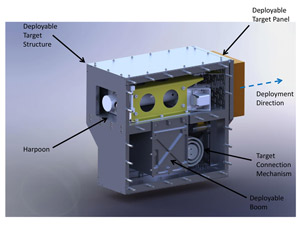PLASTIC FANTASTIC: Tidy time for waste in space

Ridding the universe of its litter problem also seems a lot easier than fishing microplastics out of the ocean. Using a carbon fibre-based space junk litter-picker, known as “RemoveDebris, defunct satellites can be captured and incinerated upon their de-orbiting. So long to the space junk dealers whose antiquated equipment already saved more than one hero or heroine in the never-ending Star Wars saga, both future and past
More About Microplastics:
Microplastics are small plastic particles in the environment that are generally smaller than 1 mm (0.039 in) down to the micrometer range. They can come from a variety of sources, including cosmetics, clothing, and industrial processes. Two classifications of microplastics currently exist: primary microplastics are manufactured and are a direct result of human material and product use, and secondary microplastics are microscopic plastic fragments derived from the breakdown of larger plastic debris like the macroscopic parts that make up the bulk of the Great Pacific Garbage Patch. Both types are recognized to persist in the environment at high levels, particularly in aquatic and marine ecosystems. Because plastics do not break down for many years, they can be ingested and incorporated into and accumulated in the bodies and tissues of many organisms. The entire cycle and movement of microplastics in the environment is not yet known, but research is currently underway to investigate this issue.













